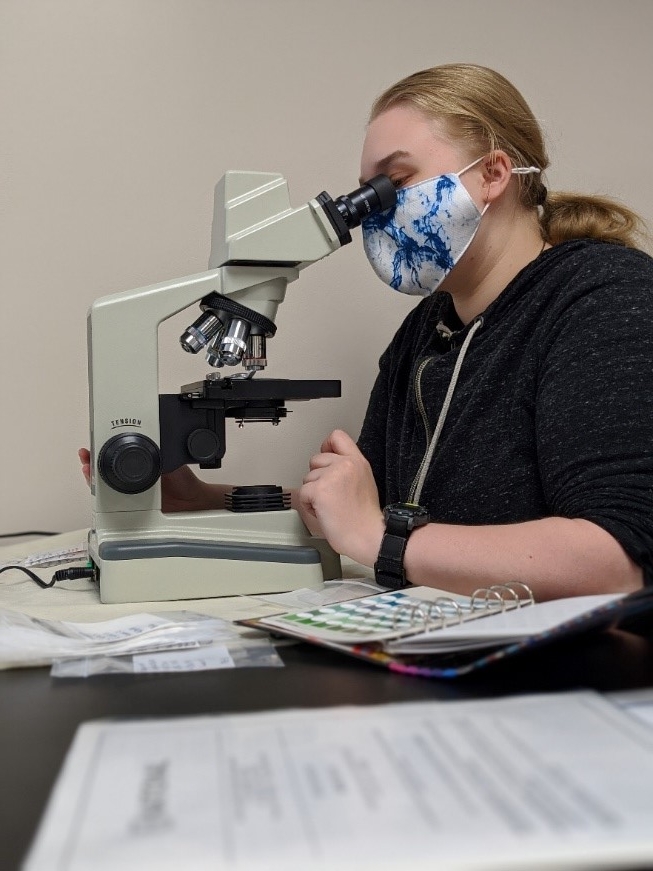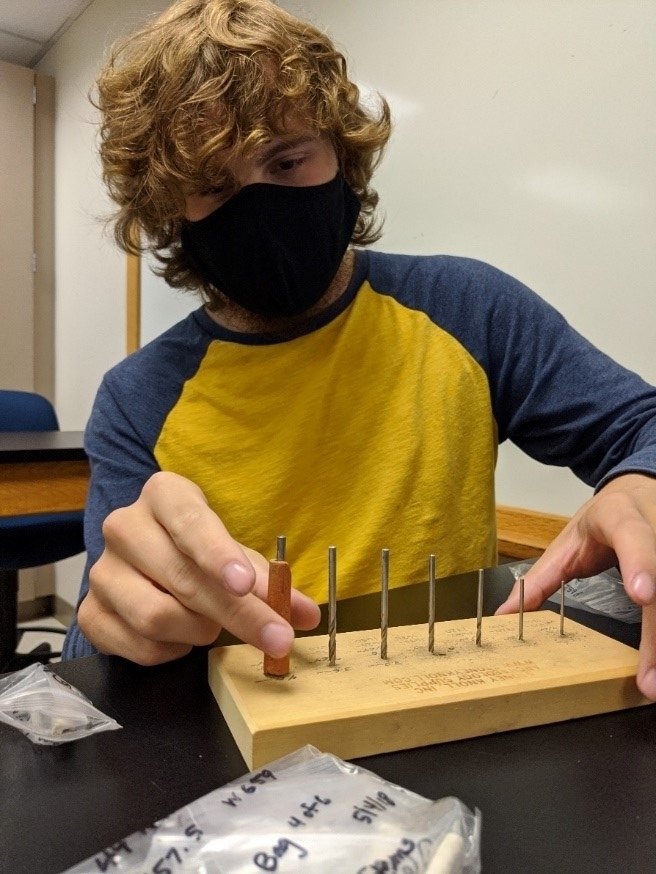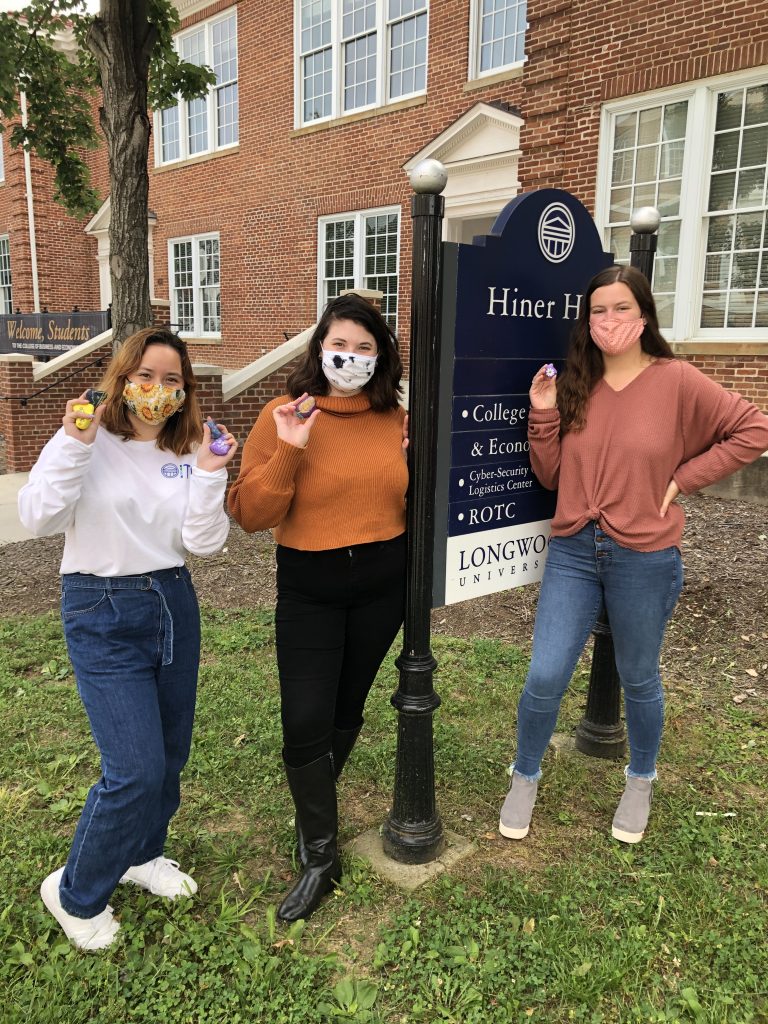This fall the Longwood Institute of Archeology is happy to welcome two undergraduate Student Research Associates (SRAs), Megan Shipe and Griffyn Caires, to our ranks! The SRA experience provides students with in-depth exposure to post-excavation archaeological practices such as the development of collections-based research designs, artifact cataloging and analysis, reporting findings to the archaeological community, and preparing presentations of archaeological research for a variety of audiences. In their roles as research associates this semester Megan and Griffyn, both juniors in the Archaeology program at Longwood, will conduct analyses of artifacts from the Eyreville archaeological collection.
The Eyreville archaeological site is located on Virginia’s eastern shore in Northampton County. A team led by archaeologists from the Virginia Department of Historic Resources (DHR), Mike Barber (former State Archaeologist) and Mike Clem (Eastern Regional Archaeologist), conducted a series of excavations at the site starting in 2017. With features dating as early as 1636, Eyreville is the oldest colonial site yet excavated on the Delmarva Peninsula. Megan and Griffyn’s analyses of artifacts recovered from the site, graciously loaned to Longwood by DHR, will contribute to Barber and Clem’s ongoing research of Eyreville’s history and early colonial life in the Chesapeake.

Research associate, Megan Shipe, examines a glass bead under the microscope
Megan’s research will focus on glass beads recovered from Eyreville. At both global and local levels, glass beads played an important role in 17th-century colonial exchange networks. In collaboration with Dr. Sarah Porter, Professor of Analytical Chemistry, and undergraduate chemistry students, Lauren Johnson and Angela Scarpa, Megan will investigate the chemical composition of the Eyreville beads. Capturing the chemical “fingerprint” of the bead assemblage will help researchers explore questions related to where the beads were manufactured before arriving in the New World. Using the historic record and building on prior archaeological research, Megan will also investigate how glass beads were used and valued by various groups living and interacting on the eastern shore in the colonial period.

Research Associate, Griffyn Caires, measures the bore diameter of a tobacco pipe stem fragment
Griffyn’s research project will examine ceramic tobacco pipes from the Eyreville collection. To date, over a thousand pipes and pipe fragments have been recovered from the Eyreville site. In addition to imported European pipe varieties that are ubiquitous on sites of European colonization throughout the Atlantic, the collection also includes many “domestic” pipes made from clays local to the North American mid-Atlantic region. Griffyn’s research will explore how archaeologists use pipe stem bore-diameter measurements to estimate site occupation dates. Particular interest will be paid to the different techniques that have been developed to date imported European pipes versus locally-made “domestic” pipes.
Megan and Griffyn’s semester-long SRA experience will culminate in the preparation of an article to be submitted for peer-review and publication in an academic journal and a professional conference presentation. In addition to six course credits, our SRAs will each receive a $3,500 stipend to support their research. Funding for their positions was made possible by a grant awarded to the Longwood Institute of Archaeology by the National Science Foundation through its Improving Undergraduate STEM Education (IUSE) program (Award #1914456).



